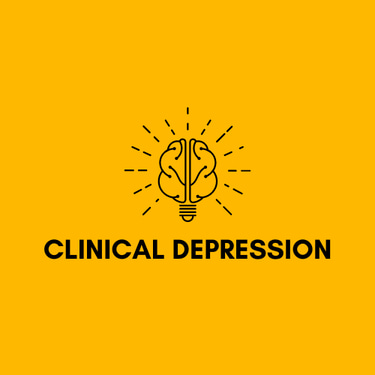For Questions: Text (833)233-0869
Remote Depression Disorder Therapy: A Comprehensive Guide to Managing Mental Health from Home


Depression is a pervasive mental health disorder affecting millions of individuals worldwide. It can manifest in various forms, from mild episodes to severe depression that significantly disrupts daily life. While traditional in-person therapy has long been the standard for treatment, technological advancements have introduced a new and effective alternative—remote depression disorder therapy. This shift in mental health care allows individuals to seek therapy and support from the comfort of their homes, making it more accessible, convenient, and inclusive.
In this article, we'll explore what remote depression disorder therapy is, how it works, its benefits, potential drawbacks, and tips for finding the right online therapist. We'll also examine how this form of therapy has become an essential part of managing depression in the digital age.
Understanding Remote Depression Disorder Therapy
Remote depression disorder therapy, also known as online or virtual therapy, is the process of receiving mental health treatment through digital platforms such as video calls, phone calls, chat, or messaging. This type of therapy allows patients to engage with licensed mental health professionals without needing to attend in-person sessions.
With the rise of telehealth services, mental health professionals can now offer psychotherapy, cognitive-behavioral therapy (CBT), and other therapeutic techniques to treat depression remotely. This is especially beneficial for individuals who may be geographically isolated, have mobility issues, or face stigma about seeking mental health treatment in person.
How Does Remote Depression Disorder Therapy Work?
Online therapy platforms typically provide access to licensed therapists, psychologists, and counselors. Once you sign up for a platform or connect with a remote therapist, you'll have a consultation to discuss your mental health needs and the type of depression you are experiencing. Depending on your preferences and the platform you choose, therapy sessions can take place via:
Video conferencing: The most common form of remote therapy, where patients and therapists have face-to-face sessions through secure video platforms.
Phone calls: For individuals who may not have reliable internet or prefer voice communication, therapy can be conducted over the phone.
Text or chat-based therapy: This option allows individuals to communicate with their therapist in real time or asynchronously through written messages, which may feel less intimidating for some.
Email or messaging: Asynchronous therapy where patients can write about their feelings and receive responses from therapists within a set time frame.
Each type of remote depression disorder therapy offers varying levels of interaction and support, allowing patients to choose the method that best suits their comfort level and lifestyle.
The Benefits of Remote Depression Disorder Therapy
Remote therapy has gained widespread popularity for good reason. It offers a variety of benefits that make it an appealing alternative to traditional, in-person therapy.
1. Accessibility
One of the most significant advantages of remote depression disorder therapy is its accessibility. Individuals living in rural or underserved areas may find it challenging to access mental health services due to a lack of nearby therapists. Remote therapy breaks down geographical barriers, making mental health care available to anyone with an internet connection or phone.
2. Convenience
Remote therapy allows individuals to receive treatment from the comfort of their own home, eliminating the need for travel. This is particularly beneficial for people with limited mobility, physical health concerns, or those with packed schedules. Patients can schedule sessions around their daily lives, reducing the stress associated with commuting and time constraints.
3. Reduced Stigma
Many individuals feel uncomfortable seeking therapy due to the stigma surrounding mental health treatment. Remote therapy provides a sense of anonymity, as individuals can engage in therapy from a private, familiar environment. This can help reduce the fear of judgment and encourage more people to seek help.
4. Affordability
In some cases, remote depression disorder therapy can be more affordable than traditional in-person therapy. Many online therapy platforms offer subscription-based models that provide unlimited access to therapists for a flat fee. This can be more cost-effective than paying per session, making mental health care more accessible to those on a tight budget.
5. Flexibility
Remote therapy offers a level of flexibility not typically available in traditional therapy settings. Patients can choose the format of their therapy—whether through video calls, phone calls, or messaging—and can often access therapy sessions outside of normal office hours. This allows individuals to fit therapy into their schedules more easily.
Drawbacks of Remote Depression Disorder Therapy
While remote therapy offers numerous benefits, it may not be the right fit for everyone. Some individuals may face challenges with this form of treatment, including:
1. Lack of Physical Presence
For some, the physical presence of a therapist in a room offers a sense of comfort and emotional safety that remote therapy may lack. Video and phone calls can create a sense of detachment, which may hinder the therapeutic process for individuals who value face-to-face interaction.
2. Technology Barriers
Remote therapy relies heavily on technology, which can be a limitation for those without access to reliable internet or devices. Technical issues such as poor connection, sound quality problems, or platform glitches can disrupt therapy sessions and hinder progress.
3. Not Suitable for Severe Depression
While remote depression disorder therapy can be effective for mild to moderate depression, individuals with severe depression or suicidal thoughts may require more intensive, in-person treatment. In such cases, immediate access to emergency services or hospitalization may be necessary, which cannot be provided remotely.
4. Privacy Concerns
Although online therapy platforms prioritize security and confidentiality, some individuals may still feel uneasy about sharing personal information over the internet. It’s important to choose a reputable platform that complies with privacy laws, such as HIPAA in the United States, to ensure your data is protected.
Choosing the Right Remote Depression Disorder Therapy Platform
Finding the right remote therapy platform or therapist is essential for successful treatment. Here are some key factors to consider when choosing the best option for you:
1. Licensed Therapists
Ensure that the platform you choose offers licensed mental health professionals who specialize in depression disorder therapy. You can check credentials, reviews, and feedback from previous clients to gauge the quality of care.
2. Therapy Style
Different therapists use various approaches to treating depression, including cognitive-behavioral therapy (CBT), psychodynamic therapy, interpersonal therapy, and mindfulness-based approaches. Make sure the therapist you choose offers a style of therapy that aligns with your needs and preferences.
3. Platform Features
Consider what kind of interaction works best for you. Do you prefer face-to-face video sessions, or would you rather communicate via text? Some platforms offer multiple modes of communication, while others may specialize in one format. Choose a platform that accommodates your preferred style of communication.
4. Cost
Compare the pricing structures of different platforms. Some offer a subscription-based model with unlimited access to therapists, while others may charge per session. Factor in your budget and insurance coverage when selecting a platform.
5. Confidentiality and Security
Ensure that the platform complies with legal requirements for patient privacy, such as HIPAA in the U.S. Data encryption and secure communication channels should be standard features of any reputable platform.
Tips for Making the Most of Remote Depression Disorder Therapy
To get the most out of your remote therapy experience, consider the following tips:
1. Create a Comfortable Space
Find a quiet, comfortable, and private place in your home where you can attend your therapy sessions without distractions. This will help you focus and engage more fully with the therapeutic process.
2. Be Open and Honest
Just as with in-person therapy, being open and honest with your therapist is crucial for making progress. Share your thoughts, feelings, and experiences to help your therapist understand your mental health needs and develop an effective treatment plan.
3. Stay Consistent
Consistency is key when it comes to mental health treatment. Stick to a regular schedule for therapy sessions, and be patient with the process. Depression can take time to manage, so commitment to therapy is essential for long-term improvement.
4. Utilize Additional Resources
Many remote therapy platforms offer supplemental resources such as mental health articles, guided meditations, and mood-tracking tools. Take advantage of these resources to complement your therapy sessions and reinforce positive mental health habits.
Conclusion
Remote depression disorder therapy is a powerful and accessible tool for individuals struggling with depression. It breaks down barriers to mental health care, offering a convenient, flexible, and effective alternative to traditional therapy. While it may not be suitable for everyone, remote therapy has helped countless individuals manage their depression and regain control over their mental well-being.
If you're considering remote therapy, take the time to explore your options, find the right platform or therapist, and commit to the process. With the right support, remote depression disorder therapy can help you lead a happier, healthier life from the comfort of your own home.
©2025
Clinical Depression
For Questions: Text
(833) 233-0869
